

The story of Swamp Rat 17: Don Garlits' most misunderstood Top Fueler
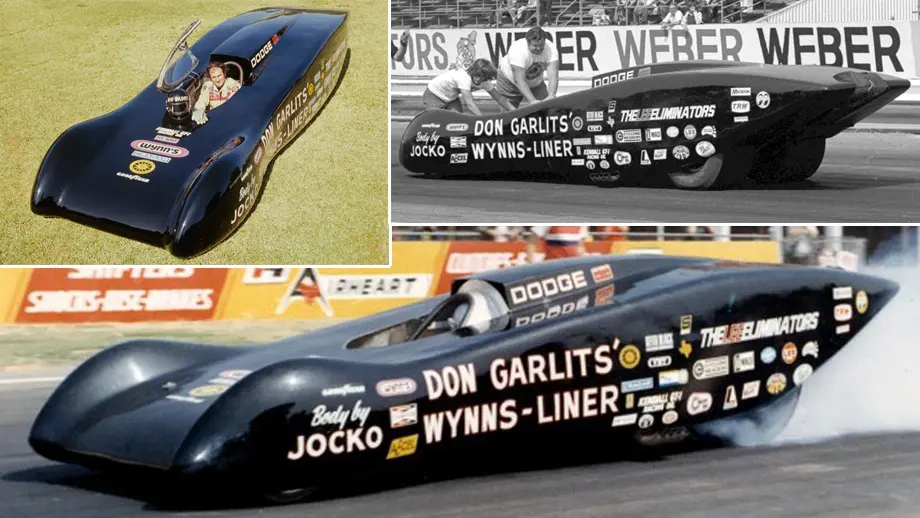
Earlier this year, I wrote a column about racecar experiments that didn’t come to fruition and cited, chief among them, Don Garlits’ Swamp Rat 17, the Wynn’s Liner, which had a very short and disappointingly unsuccessful life in 1973.

I think the reason that car always leaps to the top of my “Well, that sure didn’t work” list is because it was a rare dead end for “Big Daddy,” one of the sport’s greatest innovators and chance takers. Although there are only 38 official Swamp Rats, there were some A and B versions, and the actual number well exceeds 40, according to “Big.” So, he had a pretty great batting average, yet strikeouts are going to happen, but better to go down swinging, right? Or, as hockey great Wayne Gretzky once said, “You miss 100% of the shots that you don’t take.”
[Coming later in this column: Garlits rates his five favorite Swamp Rats and five least favorite. Stay tuned for that.]
Anyway, after heaping criticism upon the car back in February, I thought it only fair to allow The Man Himself to provide the context that defines this car’s place in the sport’s history. Not sure if he’d want to discuss one of his missteps, I reached out to the sport’s most storied driver and received an enthusiastic “I’D LOVE TO!” response to my query and away we went.
Before we get to that discussion, let me provide a little more context. The other thing that always intrigued me about Garlits’ decision to build Swamp Rat 17 was that he had blown away the sport with Swamp Rat 14 (the first rear-engined winner, 1971 Winternationals) and its evolutionary successor, Swamp Rat 16, which won the 1972 Gatornationals. (Swamp Rat 15 was a front-engined car built just in case SR14 was a flop; it never ran.) After all this success, why take this detour, especially when no one else was experimenting with aerodynamics?
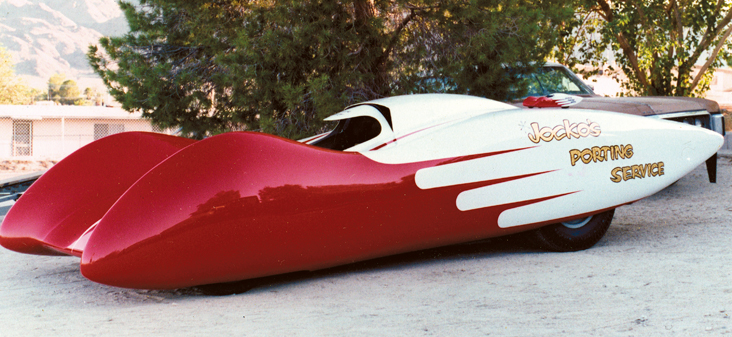
Turns out that while the ‘Liner didn’t make its debut until mid-1973, the idea was conceived in mid-1971, not long after Garlits had proven that the rear-engined design worked. It was at that point that Garlits’ old buddy, Jocko Johnson, whose similarly shaped entry had made huge waves in 1959 with “Jazzy” Jim Nelson at the wheel, suggested that maybe it was time to resurrect his design and have “Big Daddy” put it on one of his chassis.
“I always liked streamlining, and Jocko had never given up on the idea, but he needed a success rear-engined car to try it again,” Garlits explained.
The only rub was that Johnson needed a shorter car, a 180-inch wheelbase chassis, to fit under the body, Swamp Rat 14 and 16 were 215 inches.

I've never seen any detailed shots of the car without the body, but did stumble across this image, a 1/16th scale version that Johnson had built to show Garlits his idea. Very cool!
Johnson, a laid-back Californian, began work on the body mold in 1971 but didn’t finish it until 1972, then came to Garlits' Seffner, Fla., base to build the body, which would not be completed and the car not race-ready until Garlits was already on Swamp Rat 19 in mid-1973.
The slow pace for the Liner’s body construction was frustrating for Garlits, who was well-known for being able to build a complete car in just a few days, and in his great book, Don Garlits and His Cars, “Big” pulled no punches about the reason for the delay.
"Jocko by now was growing his 'weed' next door and stayed 'high' most of the time! On several occasions, I went next door, pulled up the plants, and burned them. Jocko just planted more and stayed high."
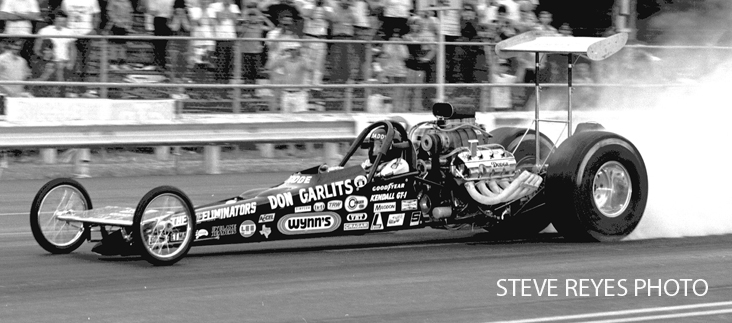
In anticipation of the Wynn’s Liner’s someday completion, Garlits built Swamp Rat 18, the car dubbed “Shorty,” with a 180-inch wheelbase so he could get a feel for the three-foot-shorter configuration and ran it at several AHRA events in 1972 but never felt comfortable in the car, but he felt sure that the Liner’s body would give the car stability and faster speed, just as adding the rear wing to Swamp Rat 14 had improved top-end speeds.
“18 just wanted to do funny things going down the course," he remembered. “You had to be really careful with it. I had to really slow down the steering to even make it work at all.”
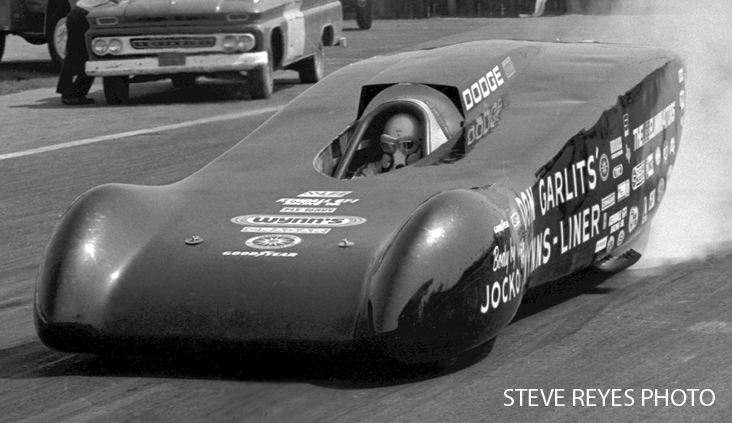
The ‘Liner was finally ready early in 1973, and Garlits towed it and “Shorty” out to California to run the AHRA Grand American event at Orange County Int’l Raceway. Veteran Funny Car racer Butch Maas, finally recovered from serious burns he had suffered in the Hawaiian Funny Car the year before, was itching to drive the car, so Garlits let him and set about getting “Shorty” also qualified for the race.
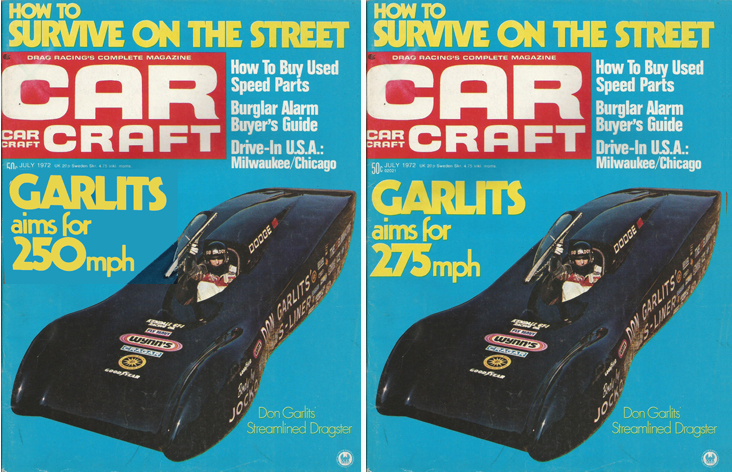
There had been so much hype built about the ‘Liner, which had been featured on the cover of Car Craft magazine back in July 1972 with the cover blurb “Garlits Aims for 275 mph.” The feature had been shot and originally the blurb had targeted 250 mph (Garlits has a copy of the original mockup with 250 on it in the museum display, and kindly shot a photo for me), but the editors decided to raise more eyebrows. Although the official national record at the time was 234.37 (set by Gaines Markley in April in Seattle), Garlits had run 243.90 mph in the final round of the Gatornationals but didn't get the chance to back it up, so maybe 250 wasn't far enough "out there" for the publication.
“By the time we got the car read, [the editors] told me that 250 wasn’t enough, that they wanted to put 275 on it,” Garlits recalled. “We thought the car might go 255 or 260, but I agreed with them that 275 sounded better and more exciting.” [For the record, we wouldn’t see 275 for another 15 years, when Darrell Gwynn ran 278 in Dallas in late 1986.]
Just as had been the case when he debuted the famous rear-engined Swamp Rat 14 in 1971, Garlits’ fellow racers scoffed at Garlits’ latest project, mostly, he thinks, because if it had been successful it would have created a major sea change in the class just as Swamp Rat 14 had done. That wasn’t to be.
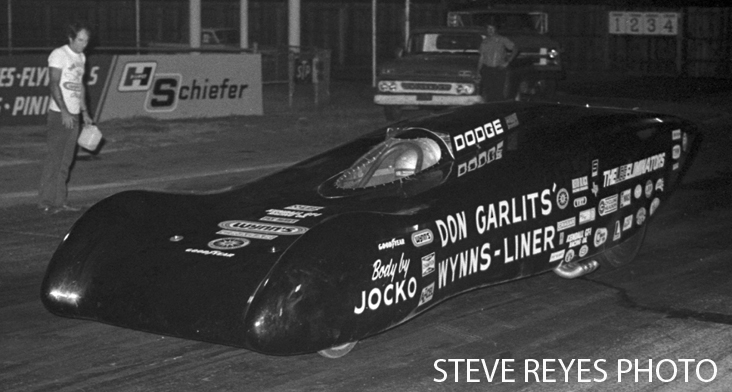
Maas made several attempts in the car but was spooked by its handling and ran a best speed of 180 mph. You can see by the photo here that the car didn’t yet have the bubble canopy on it, and Garlits is not sure it ever did in the car’s short lifespan (although it's visible in the Car Craft cover, Garlits says they didn't have a working cockpit hinge yet). You can also see "Big" in the background holding the bleach bottle. Although Maas couldn’t qualify the ‘Liner, Garlits was able to put "Shorty” into the show but lost in round one to Herm Petersen. “The whole trip was a disaster,” Garlits summed up in his book.

Still determined to make it work, Garlits put Don Cook in the car for the IHRA event at Lakeland Dragway in Florida. Cook had driven the short-wheelbase, rear-engined Piranha in late 1966, so Garlits figured he could get the job done, but he also was forced to lift a half-track on several passes. "They both said it was doing something funny, so I got in the car myself for a ride,” said Garlits.
“It took off kinda slow because it was so heavy, but then it was cruising along pretty well and making a decent run when all of the sudden the motor revved up. I quickly lifted and then felt a bump, like I had hit a bump in the track or something.
“We brought it back to the pit and tore it apart, but there was nothing broken in the driveline, and that’s when we figured out that the whole car had gone airborne and when lifted it came back down, and that was the bump I felt.
“Jocko thought I had sabotaged him, so he wouldn’t get any credit for the design, which is pretty ridiculous. He went to his grave never believing that the car was doing the things I said it did.”
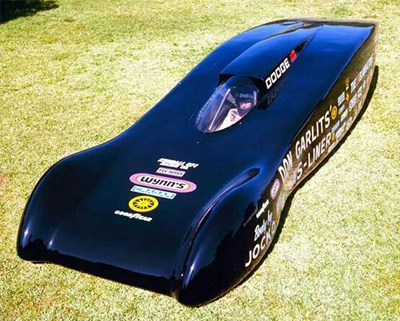
Garlits also had concerns about the amount of nitro fumes being trapped under the body and the fact that the car was not easy to get out of. “I knew that someday it would catch fire, and that would be a helluva deal for the driver, so I just gave up on the project,” he said.
Garlits sold the car to rocket-car racers Russell Mendez and Ramon Alvarez, who envisioned turning it into a hydrogen peroxide-powered rocket car, but Mendez was killed in an exhibition pass in their Free Spirit rocket dragster at the 1975 Gatornationals, and Alvarez, a plumber by trade (who actually had done the plumbing for Garlits' house) needed cash and sold it back to "Big." Given the 'Liners inherent instability at less than 200 mph, one can only imagine what it would have done at rocket-car speed. (“It would probably have flown right up into the sky,” Garlits marveled.)
So, I asked Garlits the million-dollar question: "Is he glad he built the car, or was it just a waste of time and money?"
“It was definitely a waste of time and money, but I’m glad we did it. I enjoyed all of the projects I did, even the ones that didn’t work out, like the Sidewinder and the turbine [-powered] car. Everyone raved about the turbine engines and how powerful they could be, and that car didn't work out but it was fun to figure it out. I always loved experimenting. That’s what made it so fun. When you’re involved with projects like those, your mind is going 24x7, trying to think of all of the scenarios to make it work.
“Plus if I hadn’t gotten together with Jocko, I wouldn’t have his original streamliner in my museum or the body from the Mooneyham-Ferguson-Jackson-Faust car. That all came together because of my relationship with Jocko."

The Wynn’s Liner sits proudly in Garlits museum, parked just ahead of Petersen’s own failed attempt at aerodynamics, the Can Am-inspired Olympia Top Fuel car that lived its own all-too-short life in 1974.
Any chat with Don Garlits is always a thrill, but for history geeks like me, it’s especially thrilling because of his incredible memory. He turned 89 in January, but his memory is as clear as if he were 29. He, of course, knows his cars inside out, remembering specifically not only the number of each Swamp Rat but wheelbases, engines, and great stories associated with each. I do a lot of interviews with the stars of yesteryear and many, many of them, quite naturally as they age, have less than excellent recall. Then there's "Big Daddy." He's amazing.
So, as promised earlier in this column, I asked him to rank his Swamp Rats in order of favorites. Although I'm sure that, given time, he could have ranked them from 1 to 38, I asked only for his Top 5.
Here’s his Top 5, including portions of the descriptions I wrote for my trio of Swamp Rat Spotters Guides a few years ago (Swamp Rats I-A to X | Swamp Rats XI to 20-B | Swamp Rats 21 to 34):
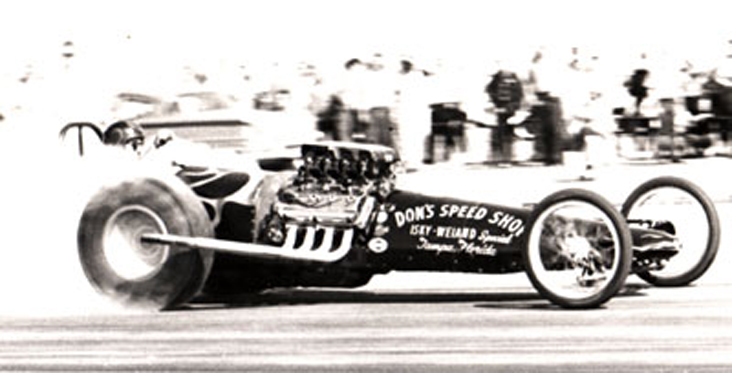
No. 1, the first (1956-60): Although it wasn't his first dragster — he had made a crude, flathead-powered dragster from a '27-T roadster by moving the engine back and hanging a seat out over the rear end — it's the first car to wear the Swamp Rat name. The car was built on the framerails of a '31 Chevy passenger car that he bought at a junkyard for $35 in 1956; Garlits removed the frame from the body in the junkyard using little more than a large ax, a cold chisel, a ball-peen hammer, and a small assortment of hand tools. He transplanted most of the parts off of the flathead dragster to this car, except the driver seat, which was an old B-17 bomber seat. Initially using Ford power, Garlits switched to Chrysler Hemi power and later to high-gear-only. The carbureted version of this car is the one that beat the nay-saying Californians in Houston but got whipped by the West Coasters in Bakersfield, but as soon as "Big" added a blower, it was all over for everyone.
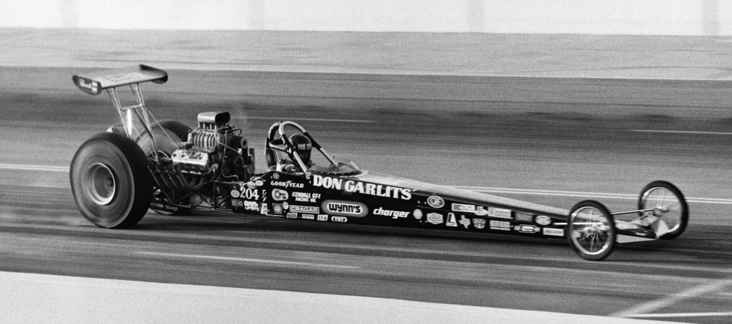
No. 22, the 5.63 car (1975): The car that succeeded SR 21 would go into the record books in a "big" way and stay there for years: This is the car in which Garlits brought the class to its knees with a 5.63-second clocking at the World Finals, a record that stood for more than six years. Built by Garlits, “T.C.” Lemons, and Don Cook on a 240-inch wheelbase, the car was lightweight and fast from the first go. He had hoarded oversized Goodyear slicks, built a new engine, and even lengthened the chassis by 10 inches, and it all paid off with that monstrous 5.63 that helped him win the event and the championship and was attached to the sport's first official 250-mph run. The historic car was retired at year's end and has never left Garlits' possession other than for occasional displays; it was hauled out of mothballs to run at — and win — the 1977 Gatornationals.
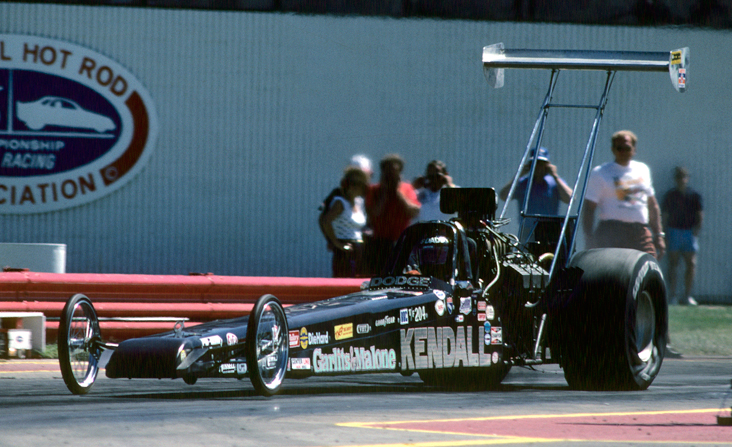
No. 26, the comeback car (1980-84): The follow-up to the porky “Godzilla” car, Swamp Rat 26 was "lean and light" — Garlits forsook paint for black anodized panels with stick-on lettering — and with the power that Garlits and Parks had learned to make to get the porky Godzilla car down the track, they seemed to be ahead of the game. The car was completed in time to run the Florida Winter Series events, but Parks quit that winter after the tough 1980 season, and Garlits won just two AHRA events in 1981. Garlits ran infrequently in the next three seasons, and Swamp Rat 26 might have just gone quietly into retirement as a disappointment had old pal Art Malone not called Garlits in the summer of 1984 and offered to fund a run at the 1984 Indy title. Malone got Garlits new parts, and they coaxed Parks out of retirement, and despite an aging car and a team of "dinosaurs" (Garlits' word), they won the race, completing a storybook comeback straight out of Hollywood. Garlits went on to also win a big eight-car Top Fuel show at Firebird Int'l Raceway and the NHRA World Finals — "Big Daddy" was back!
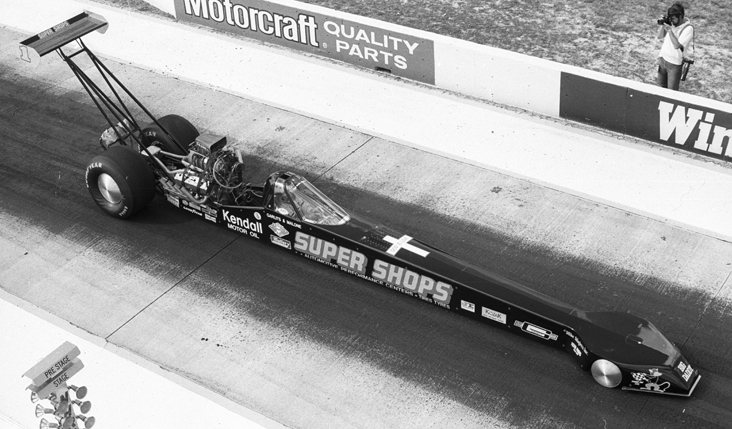
No. 30, the streamliner (1986): In the pantheon of famous Garlits cars, this cockpit-canopied streamliner may well be at the top of the pyramid. Garlits had Mike Magiera fabricate the nosepiece and constructed front "tires" out of 13-inch aluminum discs wrapped with industrial fan belts to fit beneath it. The belts would exit the wheels after almost every run, but that didn’t stop the “Rat Under Glass” from running 272.56 mph in the car's winning debut in Gainesville in 1986. Garlits later abandoned those wheels to run small-airplane tires that worked well but, ironically, took flight in his famous July 12 blowover wheelstand at the NHRA Summernationals. The car had to be backhalved in the Florida shop to complete the season, which ended with Garlits atop the points standings. Swamp Rat XXX also ran about half of the 1987 campaign and then famously became part of a display at the Smithsonian Institution the following year.
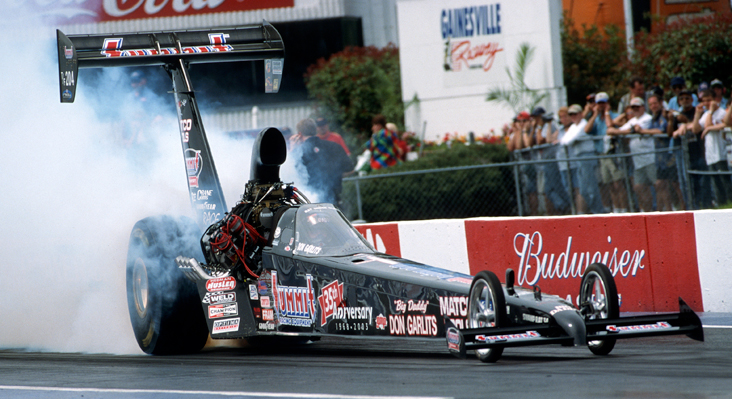
No. 34, the monowing car: Originally built in 1992 for Bruce Larson to drive after Garlits retired after experiencing eye problems caused by too many sudden parachute decelerations. At the end of the 1994 season, Garlits loaned the car to former Funny Car and fuel altered pilot Richard Langson and served as his crew chief in 1995, albeit with little success again. After years off the track, Garlits brought the car up to spec and competed at the 2002 Gatornationals and U.S. Nationals, then upped his speed mark to 323.04 at the 2003 Gatornationals. “It’s still the most modern Top Fueler in the world,” Garlits insisted to me. “It’s got the narrowed rear end and the mono wing rudder to make it go straight down the course, and the canopy.”
And, well, because Garlits was being so generous with his time and candor, I dared to ask him about his bottom five.
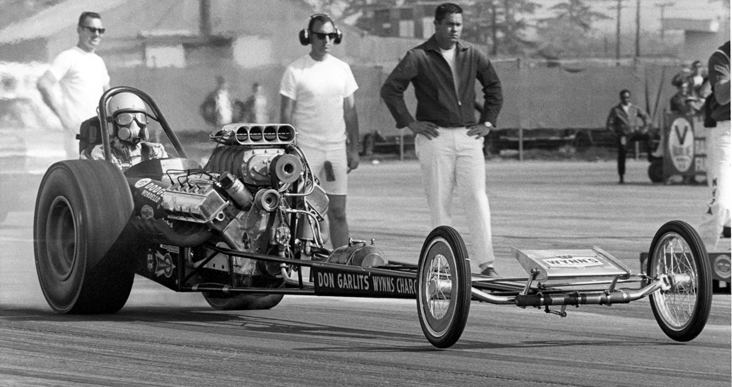
“Well, only a half-dozen cars that didn’t cut the mustard, but from what we’ve already talked about today," he said. "I think you know the five already: the streamliner (SR17), ‘Shorty' (SR18), the sidewinder (SR27), the turbine car (Swamp Rat 28-A), and then it would be Swamp Rat 12-A. That car [pictured above, was the first Swamp Rat to be designated with Arabic numerals instead of Roman numerals] was too short [just 137 inches], and we only ran that in the winter series in California."
My Spotters Guides from a few years ago ended at 34, but the numbers carried on after
- 35: 2009 DragPak stocker
- 36: 2011 Drag Pak stocker
- 37: First electric car
- 38: Second electric car:
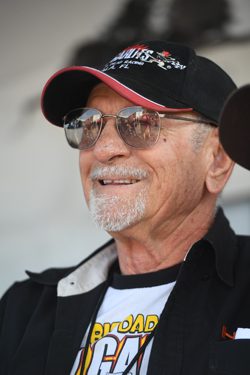
Swamp Rat 38 had been Garlits' hope for being the first battery-powered car to exceed 200 mph, but he was beaten to that mark last year by Steve Huff and parked the car.
So, naturally, I had to ask Garlits if there would ever be a Swamp Rat 39.
“Never say never,” he said, and I could detect a gleam in his eye even over a cellular connection. “Maybe I try to build a 250-mph electric car. There’s such fantastic battery technology coming, I don’t want to spend money on old technology. I still want to drive if I can by then. I still feel good, so I don't think that will be any problems.”
Same ol' "Big Daddy." I can’t wait.
Phil Burgess can reached at pburgess@nhra.com
Hundreds of more articles like this can be found in the DRAGSTER INSIDER COLUMN ARCHIVE



















































